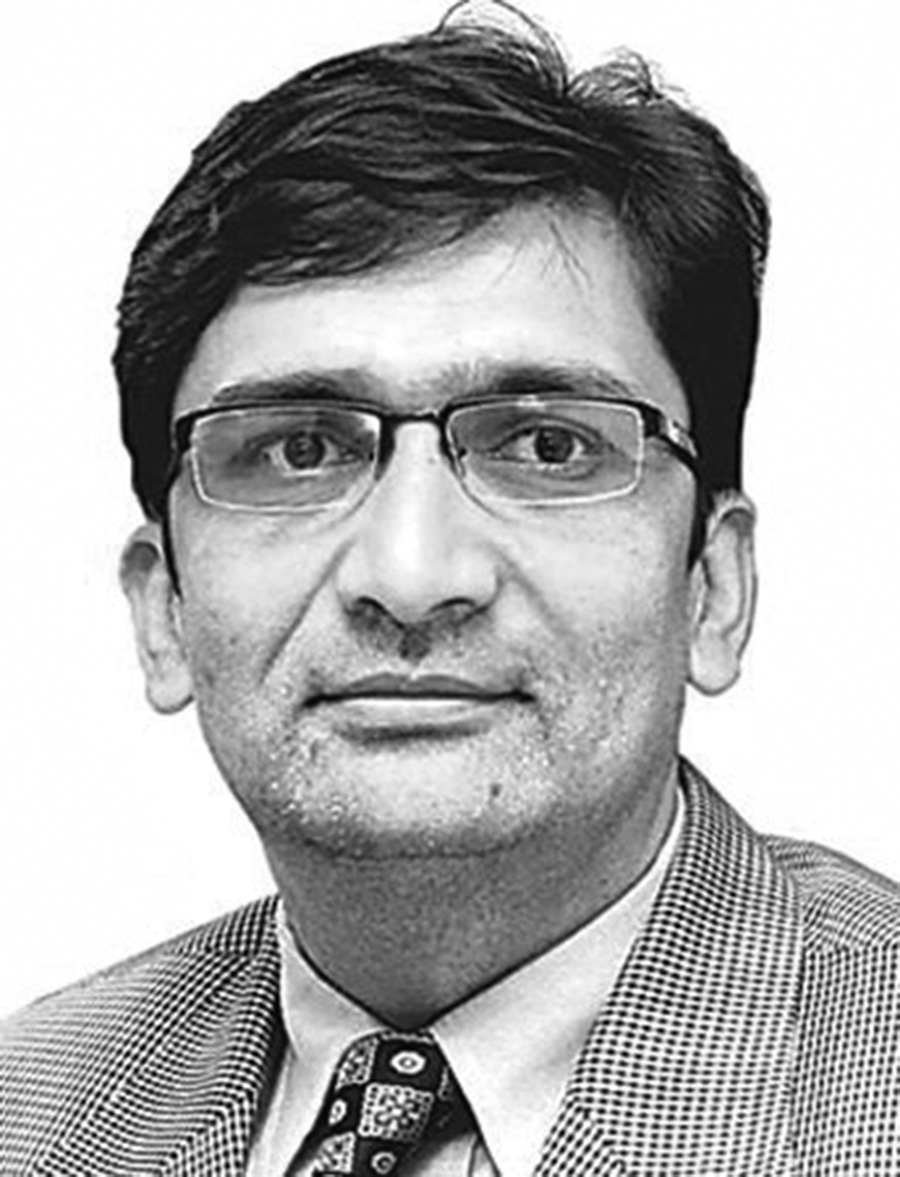Opinion
More than meets the eye
The government has been successful in achieving an economic growth rate of 6.2 percent, the highest in the last 24 years.
Achyut Wagle
The government has been successful in achieving an economic growth rate of 6.2 percent, the highest in the last 24 years. And inflation is at its lowest in the last 12 years,” the Prachanda administration proclaimed recently as one of its greatest achievements. However, a breakdown of the sectors contributing to the rare feat reveals that a booming agricultural sector was mainly responsible for the sharp rise. This was not due to any strategic intervention by the government, but simply due to timely and adequate rainfall that resulted in bumper harvests of rice, wheat and maize.
As the largest single sector, farming still constitutes one-third of Nepal’s Gross Domestic Product (GDP). The hint that the government has the ability to regulate rainfall to spur growth is, indeed, an indication of how our economy is actually being managed and presented. It is but natural that the entire country is buoyed by the news of such bright growth potentials after a very long spell of gloomy performance. The growth figures have been confirmed by multilateral institutions like the World Bank and the Asian Development Bank. However, the figures do not represent actual performance; they are only a projection. The Nepali economy still ratchets on a low growth wheel, and it needs a drastic functional and structural overhaul.
Fundamental flaws
The growth story of any economy devoid of links to productivity is a fairy story. We are basking under the same illusion. Over the past two decades, Nepal’s manufacturing base has shrunk from 15 percent of GDP in the mid-1990s to a mere 6 percent currently. Total exports merely constitute one-tenth of total imports. The trade deficit is poised to touch the $10-billion mark in the current fiscal year. A let-up in the ballooning deficit is not visible in the foreseeable future as Nepal has failed to identify and produce even a couple of exportable, modest value goods that have a reasonably sustainable demand in the international market. If exports cannot be boosted, the aim should be to at least substitute imports of staple consumer goods. Our economy has badly failed even on this front.
One desirable property of investment in any productive sector is that, apart from producing goods and services, it generates employment opportunities and contributes to government revenues. But Nepal’s economy for long has suffered from low investment, low productivity and, therefore, a low rate of growth in jobs. Obviously, tax contribution too is bound to be low. Therefore, until the economy sees a significant trend reversal in any of these components of the growth ecosystem, ambitious growth projections can only be short-lived, if not white lies.
Lately, one sector that has been attracting relatively substantial investments is hydropower. However, has the growth produced more jobs for Nepalis and put a brake on the exodus of young migrant workers? This particular question is crucial as investments in the hydropower sector are seemingly crowding out investments in other productive sectors, and high-wage jobs in the techno-intensive sector are increasingly slipping out of the hands of Nepali workers.
Low capital spending
At the structural level, Nepal’s economy seems to have been trapped in an unsustainable, high import-high revenue-high consumption cycle. The government often boasts about exceeding its revenue collection targets. Half of its revenues come from customs duties on ever increasing imports. A breakdown shows that almost two-thirds of this revenue flow comes, directly or indirectly, from import-related trade and economic activities. This ‘regressive’ revenue is plainly suicidal for the economy as it is killing domestic industry and even displacing low-value Nepali agro products from the market.
Another concern is that the economy’s resource absorption capacity has remained very poor. For the last one decade, effective capital spending has barely crossed, on average, 20 percent of the budget allocation even though capital expenditure allocations have historically remained far lower than general expenditure allocations. These two phenomena, import-dependent revenue and low capital expenditure, expose the hollowness of the much ballyhooed ‘impressive’ revenue collection.
These highly risky trends highlight the need for a total restructuring of our budget system and earmarking procedures besides serious groundwork to enhance the institutional efficiency of the public procurement mechanism. Strong political will is essential to initiate measures aimed at managing the economy with an acceptable degree of professionalism. Unfortunately, the political leadership of all hues, more often than not, has been deliberately avoiding this national responsibility. The ruling party invariably intends to employ the finance portfolio as the main instrument for rent seeking. Yet, interestingly, the politician in charge rarely understands the simple fact that the more money he spends, the larger will be his commission. Despite the insatiable greed among the political class, capital spending has remained consistently low.
Disincentive to investments
The growth rate may have surged at a blistering 6.2 percent, but other macroeconomic indicators point to impending economic danger. Inflation has cooled from 10 to 3 percent without any endeavour on the part of the government, and it may not be something to celebrate as it could be the beginning of deflationary pressure. This could act as a disincentive to new investments.
Another alarming trend that seems to have been overshadowed by the optimistic growth figure is a depletion of the current account balance by a whopping Rs145 billion over the past year. This is a clear indication that our import bills are increasingly becoming unsustainable.
A similar depletion has been observed in the balance of payments. The single reliable source of foreign exchange to offset these pressures on the economy is the inflow of remittance, and it has been growing at a decreasing rate compared to last year. The real risks in the economy can hardly be sugar-coated by seemingly rosy growth figures.
Wagle, a founding editor of the economic daily Arthik Abhiyan, an an eco-political analyst




 25.92°C Kathmandu
25.92°C Kathmandu










